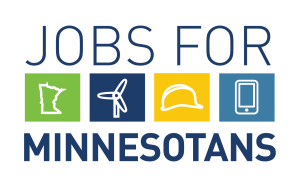Permitting Reform
Jobs for Minnesotans is committed to advancing responsible industrial projects through a predictable, timely and transparent permitting process while also protecting the environment under the EPA and Minnesota’s strict regulations. Broad permitting reform for all responsibly industries is essential to strengthening Minnesota’s communities and power our state’s clean energy future.
What is Permitting Reform?
Permitting reform refers to changes or updates to the regulatory processes and requirements involved in obtaining permits for all industrial projects including mining operations. The goal of permitting reform is to make the mining permit approval process more efficient and responsive to the needs of both the industry and the communities affected by mining activities, while still ensuring that environmental and safety standards are met. Key aspects of permitting reform include:
- Streamlining permitting processes to reduce delays and costs
- Eliminating outdated or unnecessary regulations that slow approval processes
- Enhancing transparency through increased accessibility of information for stakeholders and the public
- Ensuring reforms balance increasing efficiency in permitting processes while maintaining rigorous environmental standards and protections
Resource from the Minnesota Chamber Foundation:
Streamlining Minnesota’s Environmental Permitting Process: Essential for Growth

Minnesota’s environmental permitting process has been a concern for business leaders, with some major projects stalling or leaving the state due to permitting challenges. The Minnesota Chamber Foundation recently released a report, developed with Barr Engineering, the Policy Navigation Group, and Squire Patton Boggs, which offers recommendations to enhance certainty and improve transparency and timeliness in Minnesota’s permitting system without compromising standards. The six-month study examined air, water, and wetland permitting processes, compared Minnesota to neighboring states, assessed the economic impact of delays, and identified strategies to streamline permitting for new investments.
Read the study here.
